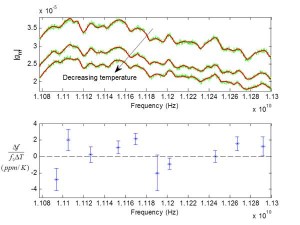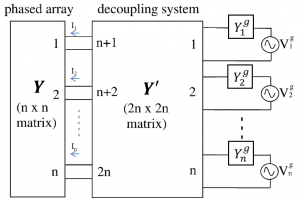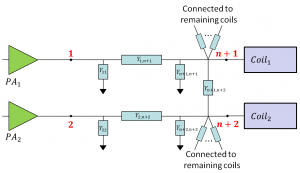Automated Parameterized Dynamical Modeling of RF MEMS Resonators
Design and optimization of novel RF micro-electro-mechanical system (MEMS) resonators such as resonant body transistors (RBT) require modeling across multiple domains including mechanical (distributed stress and elastic wave models), electrical (semiconductor devices and RF small signal models), and thermal. These domains are all cross-coupled in nonlinear ways and require lengthy finite element multi-physics analyses to solve. Due to the complexity of these structures embedded in the CMOS stack and sensed using active FETs, the finite element multi-physics simulation prevents quick, intuitive parameterization of device design. A reduced model parameterized across all three domains is therefore necessary both for rapid prototyping and for device optimization.
In this work, we are currently developing an algorithm to automatically generate compact and accurate models for RF MEMS resonators from input/output measurements. In a future stage of the project, we will develop physics based models from first principles and from finite element solvers. In both cases, our compact models will be suitable for AC, DC, and RF operation of the device and allow the circuit designers to run circuit-level time-domain simulations using any commercial circuit simulator[1]. The compact models are parameterized, so that the circuit designer will be able to instantiate instantaneously models within the circuit simulator for different values of the key device parameters[2]. Key parameters included in the compact parameterized models for RF MEMS resonators are resonant frequency, quality factor, presence of spurious modes, and operating temperature. Values for the model coefficients are calibrated using measurements from MEMS resonator devices. A critically important feature of our models is to guarantee that when circuit designers change arbitrarily values for the device parameters, the compact models will always preserve the physical properties of the original device and will never cause numerical instabilities and convergence issues when connected to other blocks within the circuit simulator[1]. We can use these models for sensitivity analysis and automated design space exploration. Numerical results are presented for a hybrid MEMS-CMOS Si based resonator[3] shown in Figure 1. For these devices, we model temperature dependent transconductance[4]. Figure 2 demonstrates an excellent match between the output of our identified models and the given measured data.
- Figure 1: Top and 3D views of a Si-based NEMS-CMOS.
- Figure 2: [Top] Measured and fitted values of the transconductance. Light noisy lines (green) show the measured data while the solid dark lines (red) show the output from our model. [Bottom] Temperature sensitivity of each resonant mode with error bars.
- Z. Mahmood, R. Suaya and L. Daniel, “An efficient framework for passive compact dynamical modeling of multiport linear systems,” in Proc. of Design, Automation and Test in Europe (DATE), Mar. 2012. [↩] [↩]
- Z. Mahmood and L. Daniel, “Guaranteed Passive Parameterized Modeling of Multiport Passive Circuit Blocks,” in Proc. of TECHCON, Sept. 2011. [↩]
- R. Marathe, W. Wang, and D. Weinstein, “Si-based unreleased hybrid MEMS-CMOS resonators in 32nm technology,” in Proc. of IEEE 25th International Conference on Micro Electro Mechanical Systems (MEMS), Feb. 2012. [↩]
- Z. Mahmood, R. Marathe, D. Weinstein, R. Suaya and L. Daniel, “Automated Parameterized Dynamical Modeling of RF MEMS Resonators,” in Proc. of TECHCON, Sept. 2012. [↩]



